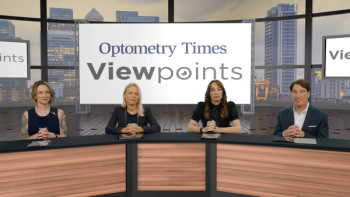Speaking at Controversies in Modern Eye Care, Luke Lindsell, OD, MD, offered a compelling perspective on how evolving therapies for geographic atrophy (GA) and improved imaging tools are reshaping retinal disease management. Now practicing at the Cincinnati Eye Institute and teaching at the University of Cincinnati, Lindsell emphasized optimism and pragmatism in how eye care professionals can collaboratively manage retinal disease.
“Having any therapy at all for GA has been exciting,” Lindsell stated, referring to the current intravitreal treatments now in clinical use. But what excites him most are the developments on the horizon: at-home therapies, gene therapy, and devices like the Valeda Light Delivery System (LumiThera), which uses photobiomodulation and shows early promise in preventing GA altogether.
Gene therapy and the quest to reduce treatment burden
Key takeaways for optometrists:
- GA treatment is evolving: Be aware of new therapies, including gene therapy and at-home delivery methods.
- Use all imaging tools available: Autofluorescence, near-infrared, and OCT together provide deeper insights into retinal health.
- Own the early stages: Optometrists should lead care in early AMD and diabetic eye disease, referring when appropriate.
- Patient expectations matter: Set realistic goals, especially in late-stage disease where treatment options may be limited.
- Collaboration is key: Communicate clearly with retinal specialists and patients to ensure shared decision-making and long-term trust.
With patient fatigue around frequent injections being a persistent concern, Lindsell highlighted the growing excitement around gene therapy. Although still in clinical trials, early results suggest these treatments could significantly reduce the frequency—or even eliminate the need—for repeated injections. “It’s what patients ask all the time: ‘When will I be done?’” he said.
Modern imaging: OCT and beyond
Lindsell recommends a proactive approach to imaging for optometrists. “Most of us have an [optical coherence tomography scanner], but don’t forget about autofluorescence,” he urged. Utilizing autofluorescence alongside near-infrared imaging or red-free photography can enhance detection of subtle GA changes, particularly at the fovea, where natural hypoautofluorescence can mask early signs.
Optometry's role in early retinal care
Lindsell emphasized that optometrists should feel confident in managing early to moderate stages of retinal disease, including diabetic retinopathy and macular degeneration. “Be the leaders in early retinal care,” he said. Discussions around supplements, glycemic control, and lifestyle modifications are key components of this care phase. Referral should be considered when vision is threatened or novel therapies become appropriate.
Collaboration built on respect and transparency
Above all, Lindsell championed a respectful, comanaged approach to patient care. “This patient is not mine,” he stated, reinforcing that a specialist’s role is to complement—not replace—the referring optometrist’s care. He communicates this clearly to patients and colleagues, advocating for shared decision-making and continuous communication.
Finally, he reminded ODs to set realistic expectations. Not every referral will yield a treatment option, especially in advanced disease. However, patients often benefit emotionally from a second opinion and a clearer understanding of their condition.


















































.png)


